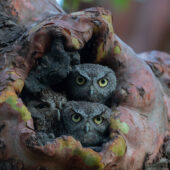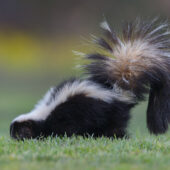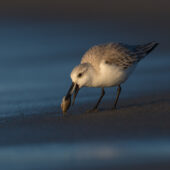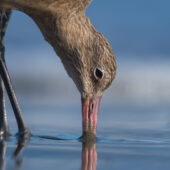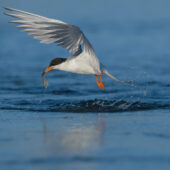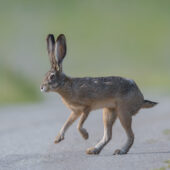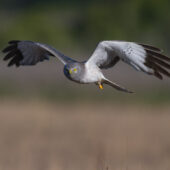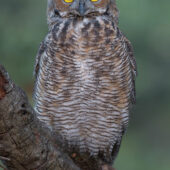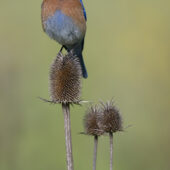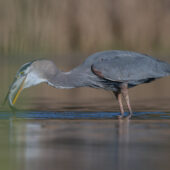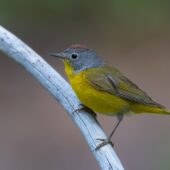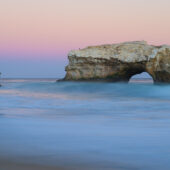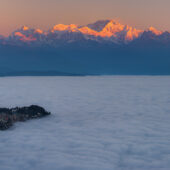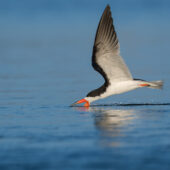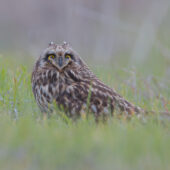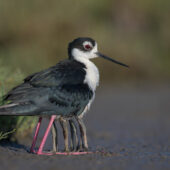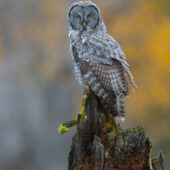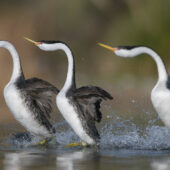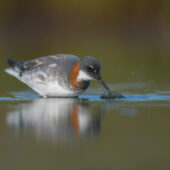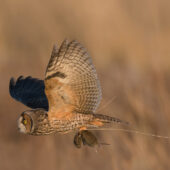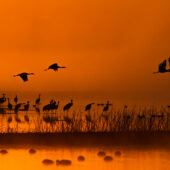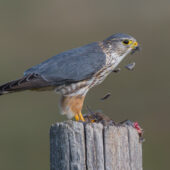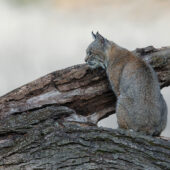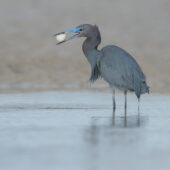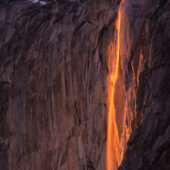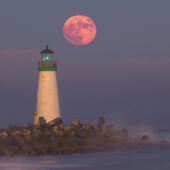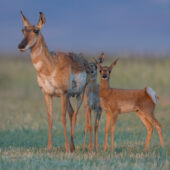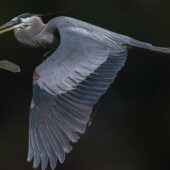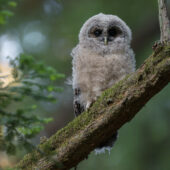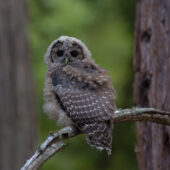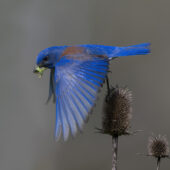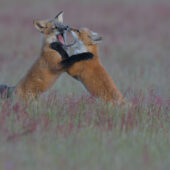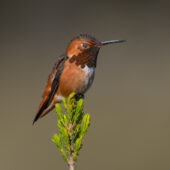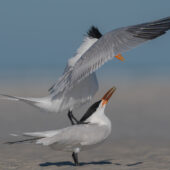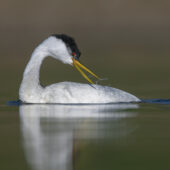The Nikon Z9 and revisiting the ‘Wishlist from an Amateur’
By Sankha Hota (Flickr | Instagram | Website)
This article is in continuation of a published article in the Nikon Rumors two years ago, titled “Nikon D500 upgrade: a wishlist from an amateur”. There I wished for: a camera with the same ergonomics as the D500 with 12-14 fps and a 30mpx sensor with better usable iso, up to 6400. Obviously, the auto-focus system can be borrowed from the D6 and that will be it. It would be an added bonus if Nikon includes 4k video at 60 fps. …… I am essentially looking for a camera that will give me extra leverage on cropping and slightly more in noise-handling capability.
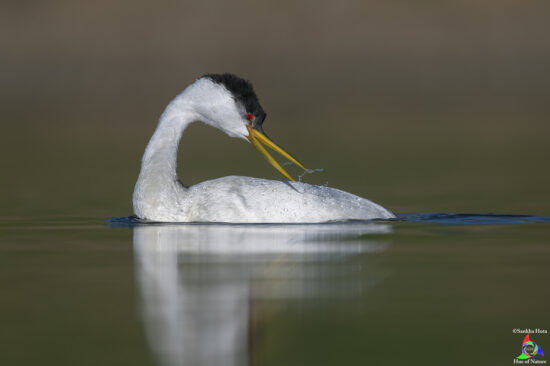
Pic 1: Western Grebe (f/6.3, 1/2500s, 700mm, EV-1, iso 180)
This image and all but one other image below are full frame, i.e. no cropping.
There was a good amount of constructive discussion in the comment section of that article, from which I learned a lot. In a nutshell, the conclusion at that time was: my wishlist will stay as a wishlist for a while, or I could go and buy the D850. I did not like the idea of buying another DSLR unless it had better iso handling and corner-to-corner focus point coverage with excellent AF. I was also contemplating whether I should stay loyal to Nikon or move on.
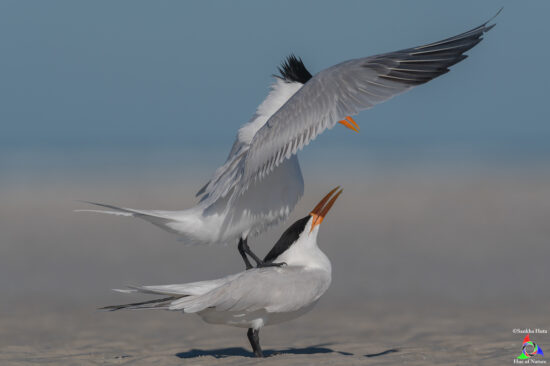
Pic 2: Royal Terns (f/7.1, 1/2500s, 700mm, EV-0.3, iso 180)
If it is a Z9 image, where should the focus point be?
Fast forward two years, Nikon has now introduced the mirrorless Z9. So, what has changed? Well, I came up with two questions this time around: Is this the camera I was looking for, and how much I gain by buying one? The one-line answer is: The Z9 surpasses my wishlist, so I should gain a lot.
However, in reality, it is not that straightforward. A $6000+ investment (with taxes) by a hobbyist/amateur just for a camera is a lot to consider. In this article, I will try to explain the not-so-straightforward answer based on my experience.
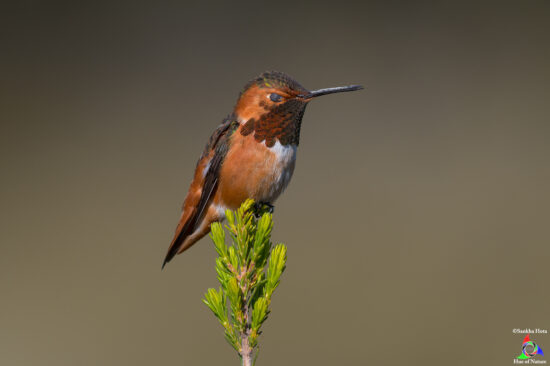
Pic 3: Allen’s Hummingbird (f/7.1, 1/2500s, 500mm, EV-1.3, iso 450)
Will the Z9 focus on the eye when it is closed?
If you are looking for bullet points instead of going through the article, then scroll down to the end. But do skim through the comments/questions tagged with each image.
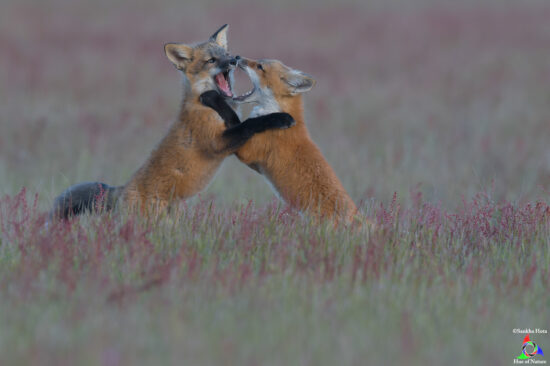
Pic 4: Red Fox kits play-fight (f/7.1, 1/1600s, 700mm, EV-1, iso 1600)
iso 1600 is no big deal!
I bought a Z9 and it was a significant investment on my part which I was not aiming for, knowing that I would not be able to invest in a telephoto Z lens in the near future. I had the option of canceling the order at any time, in case early adopters concluded that DSLR lenses are not performing well with the Z9+FTZ II. That flexibility gave me some peace of mind. Finally, by the time my camera was shipped (around January end), I had an initial understanding from fellow Z9’ers that the Sigma 500mm F4 Sports, my most used lens, is performing flawlessly with the Z9+FTZ II.
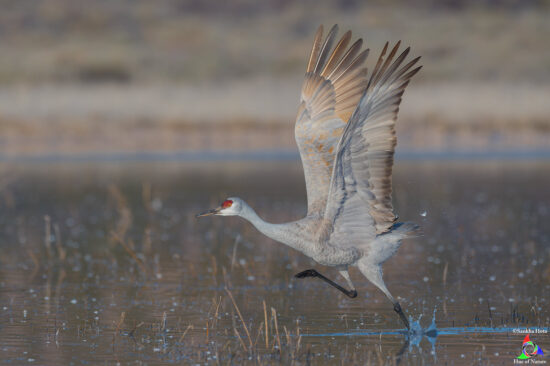
Pic 5: Sandhill Crane takes off (f/5.6, 1/2500s, 500mm, EV-0.7, iso 450)
How easy it was to get most frames tack-sharp in the burst!
Just for the benchmark: my earlier owned D750 had shutter actuation of ~ 56000 in about 8 years; and the D500 that of ~ 157000 in about 6 years. In comparison, the current no-shutter count of the Z9 is 34333. The point is, my usage of the Z9 on average is similar to the D500 and D750 combined when taking into account the FPS of each camera.
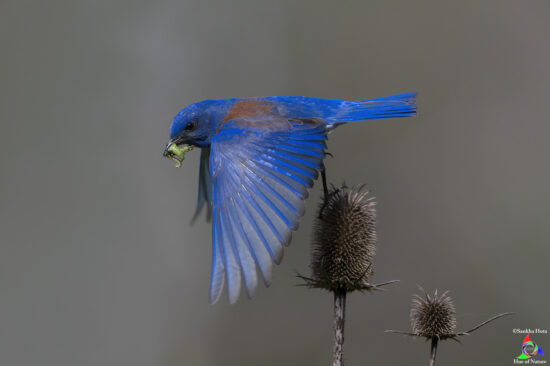
Pic 6: Western Blue Bird (f/6.3, 1/2000s, 700mm, EV-0.7, iso 800)
Not a difficult subject to photograph with a D500!
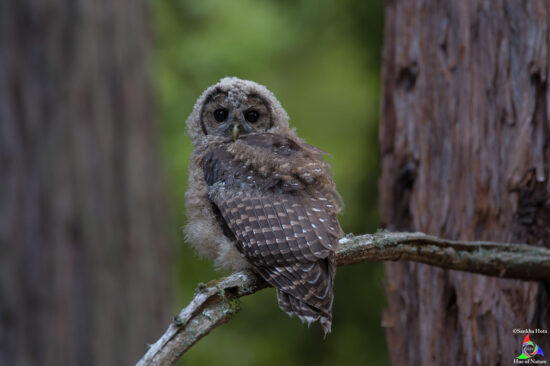
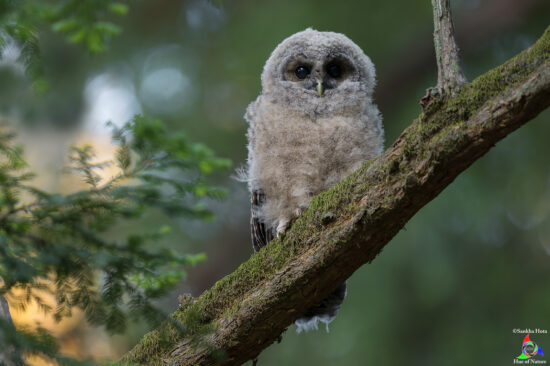
Pic 7 & 8: Northern Spotted Owlets (f/4, 1/8s, 500mm, EV-1, iso 500) & (f/4, 1/20, 500mm, EV-1.3, iso 900)
Do you see the difference in the image quality?
Previously my everyday combo was the D500+Sigma 500mm F4+1.4x TC, today it is the Z9+FTZ II+Sigma 500mm F4+1.4x TC. An overall ~300gm weight increase which definitely makes a difference for me since I mostly handhold my setup (except while photographing owls in the old growth forests or doing landscapes where sub-second shutter speed is normal).
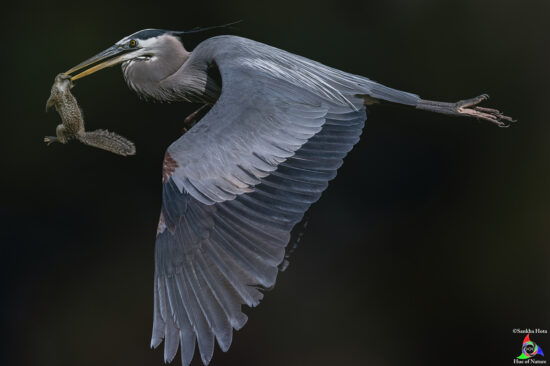
Pic 9: Great Blue Heron and California Ground Squirrel (f/6.3, 1/800s, 700mm, EV-0.3, iso 1100)
The shutter speed is not that high but it did the job.
With the Z9, I get the best of (almost) both worlds in just one camera. The positive is slightly less hike/travel weight (compared to D500+D750), and the negative is missing out on opportunities when I quickly want to photograph action with a wider angle of view. An obvious solution could be resorting to a zoom lens, but again I am picky about image quality, primarily at the long end.
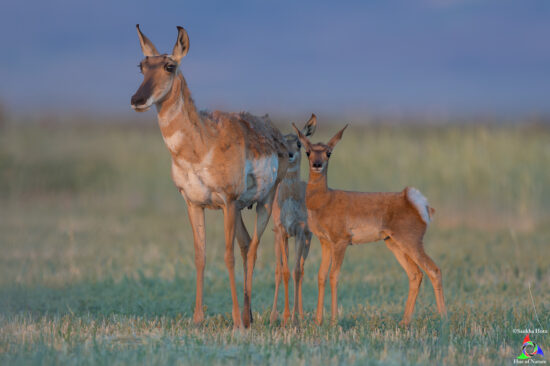
Pic 10: Pronghorn Family (f/5, 1/500s, 500mm, EV-0.7, iso 450)
Too many eyes to focus, what would the Z9 do?
I had never taken a keeper with the D500+Sigma 500mm F4+1.4x TC combo at f/5.6 ever. With the Z9, I see that in a desperate situation I am willing to accept a photograph at f/5.6 aperture. It is qualitatively sharper and being a ~46mpx image, gives me additional leverage for resizing.
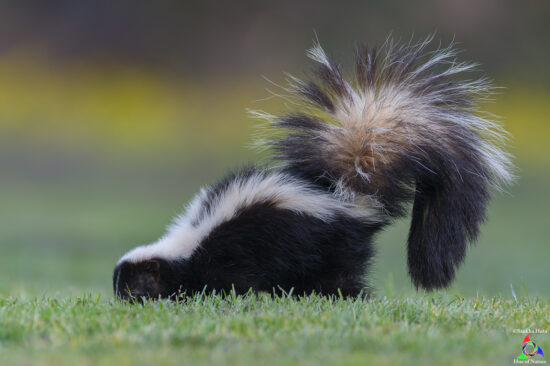
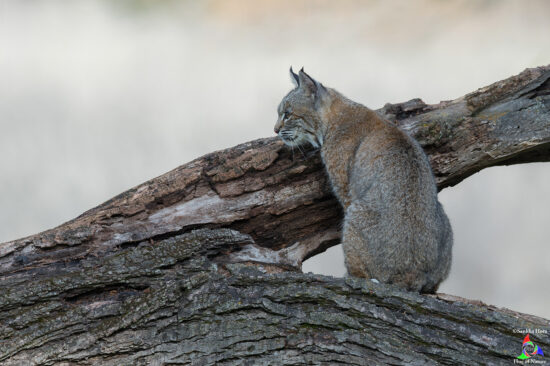
Pic 11 & 12: Striped Skunk & Bobcat (f/6.3, 1/250s, 700mm, ev-0.3, iso 1600) (f/5, 1/800s, 500mm, EV-0.3, iso 250)
Can the Z9 maintain the focus on that eye?
My Sigma 500mm F4 feels snappier with the Z9 and does not suffer from the problem of lost focus on continuous bursts (where every 2nd or 3rd image becomes slightly out of focus). Overall, no optical issues and I believe the images have become sharper.
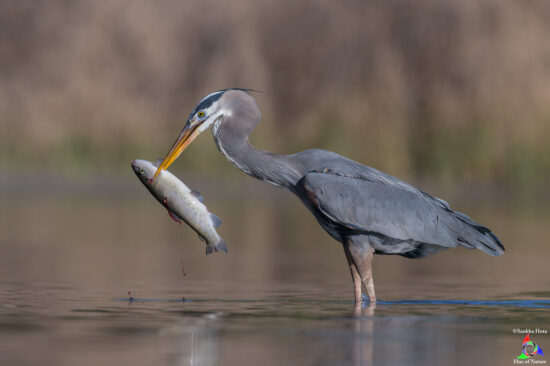
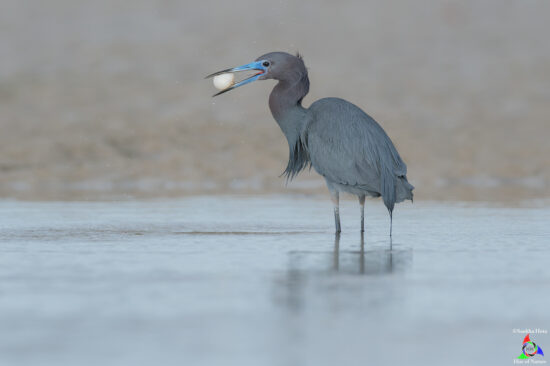
Pic 13&14: Great Blue Heron with Rainbow trout & Little Blue Heron with Pufferfish (f/6.3, 1/2000s, 700mm, EV-1, iso 320) & (f/6.3, 1/1250s, 700mm, EV-0.3, iso 500)
Unless you are printing big, does sharpness matter much?
I photograph landscapes in bracketing with 3 to 5 images per scene. But I realized that the base ISO 64 images from the Z9 has a lot of flexibility, given that you don’t blow out the highlights completely. All my other DSLR lenses (Nikon 20mm F1.8, Tamron 15-30mm F2.8 VC, Nikon 70-200mm F4), however, work more or less fine as well. I found some amount of barrel distortion with the 70-200mm F4 which is easily manageable with software corrections.
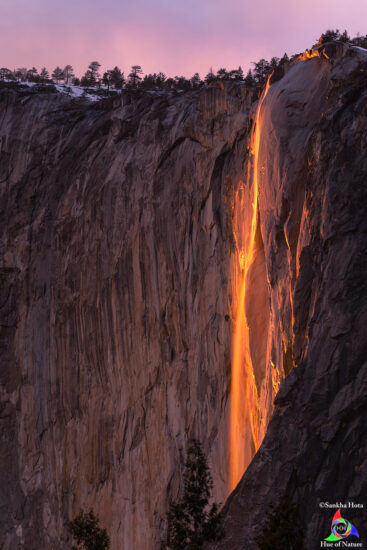
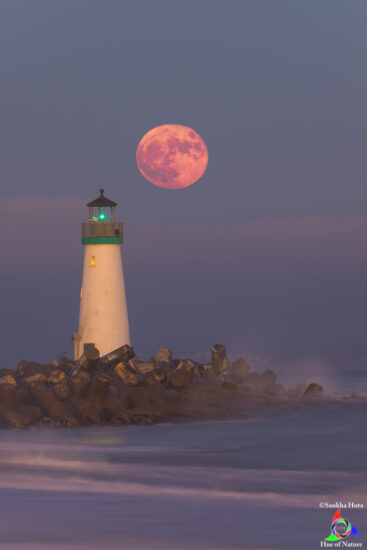
Pic 15 & 16: Firefall and Buck Moon rising
One-shot image is possible but exposure blending can do wonders!
I use two Delkins 128GB Black Cfexpress type B cards and take images exclusively in lossless compressed raw format. Only the selected NEF files that I want to process in photoshop are converted into DNG, and my old CS6 has no issues with the processing. The only problem is that I have way too many keepers now and storage becomes an issue.
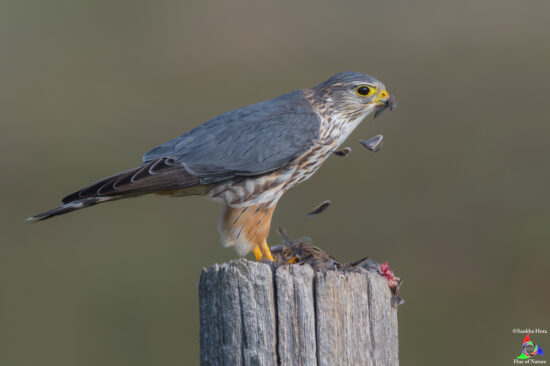
Pic 17: A Prairie Merlin (f/7.1, 1/1600s, 700mm, EV-0.7, iso 400)
How many frames per second do you need to freeze this particular moment?
So, with the Z9, do I really get three times the value (in my case, satisfaction) compared to the D500 (actually it is less than two times if D750 is added)? The answer is – it depends. For me, it was worth the jump. For amateur photographers like me who carry two separate cameras for wildlife and landscape, buying a Z9 should be beneficial. It can do both and decidedly outperforms in wildlife photography. The downside- you cannot do both at the same time, unless you are carrying two Z9s. The Z9 gives you a lot of versatility but it is costly. I sold both my DSLRs and two lenses to recoup some of the money I spent on the Z9.
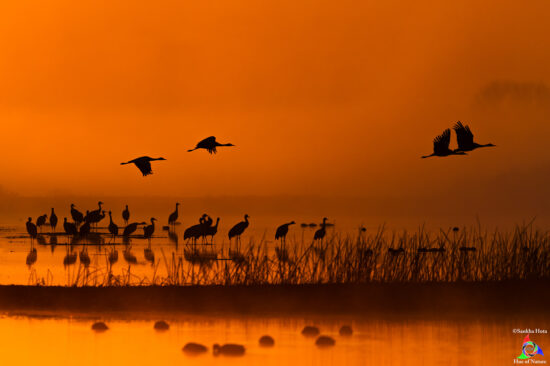
Pic 18: A fiery morning (f/8, 1/2500s, 700mm, EV-1, iso 800)
Not a difficult scene for the D500!
Now, getting back to the long-winded subjective answer; “Did I really gain something?” With my D500, I used to get a few keepers from a burst of images. However, sometimes it could be just one image out of 10 in the burst. But with the Z9, I am regularly getting 8-9 images out of 10 from a half-second burst. I have realized that I am now more willing to point my camera to capture actions that I never dared to try with the D500.
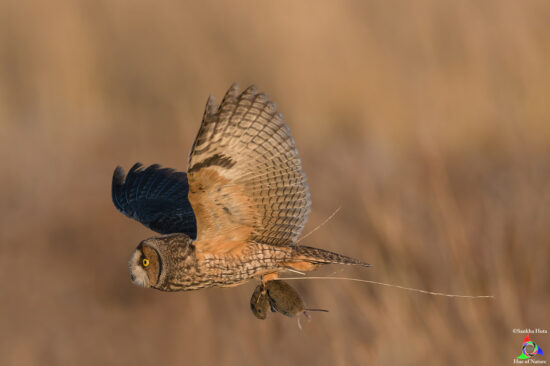
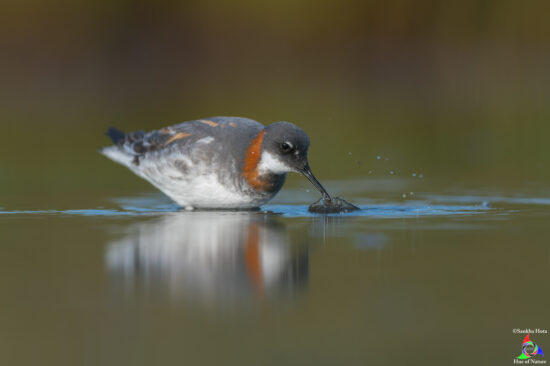
Pic 19 & 20: Long-eared Owl & Red-necked Phalarope (f/7.1, 1/2000s, 700mm, ev-1, iso 720) & (f/5, 1/3200s, 500mm, EV-0.7, iso 450)
Once-in-a-lifetime opportunity with the owl! Do you know how fast the Phalarope spins?
With the Z9, recomposing is as easy as it gets. The focus points extend in all sides/corners of the frame and the camera does a very good job until the subject’s eyes leave the viewfinder. Does that mean you would not be able to take one of those frame-filling, eye-in-the-corner images with the D500? Yes, you can, but the rate of failure will be considerably high for moving subjects.
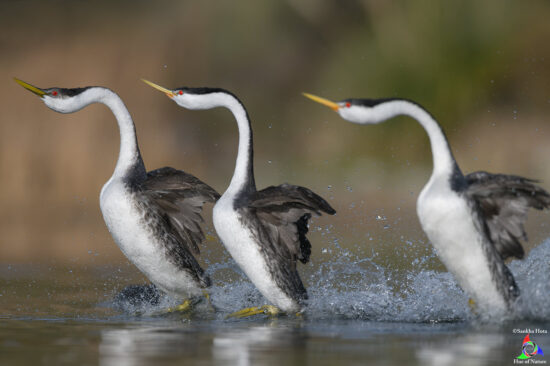
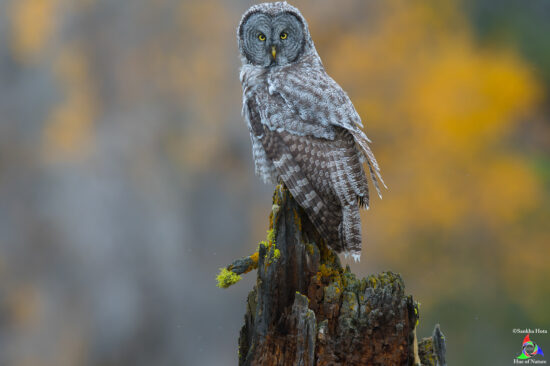
Pic 21 & 22: Grebes rushing & Great Gray Owl staring (f/6.3, 1/2500s, 700mm, ev-1, iso 450) & (f/7.1, 1/640s, 700mm, EV-1.3, iso 720)
No problem focusing on the extreme edges.
The Z9 is equally good in both portrait and landscape orientations. You can use the D500 in portrait mode as well, but try to take images with the subject moving its head constantly and you will realize it is a tad bit difficult. This matters when you only get a split second to take an image. I also like to take images from eye level, especially for subjects on the ground. But there are times when lying on smelly, dirty, sticky mud is not a favorable option. With the Z9, lower your tripod or use ground pod to put your camera close to the surface and just use the flip-out screen to take images. The auto-focus is as zippy as through the viewfinder. Try to do it with the D500 and you are bound to miss the best moments more often than not.
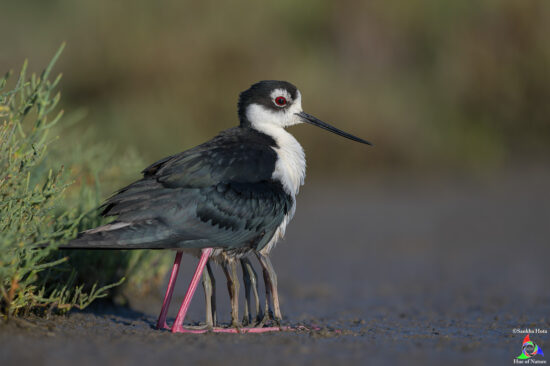
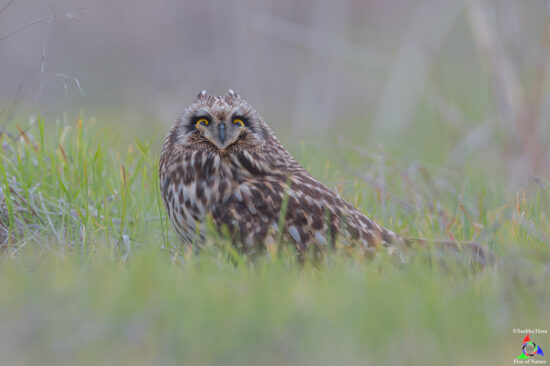
Pic 23 & 24: Black-necked Stilt & Short-eared Owl (f/4, 1/2000s, 500mm, ev-1, iso 200) & (f/7.1, 1/250s, 700mm, EV-0.7, iso 1400)
Want to photograph eye level, just get dirty!
The Z9 does sometimes lock focus in unexpected places and would not want to come back. You will at least need to press a few buttons to bring it back to where you want it to focus, which is not the case with the D500. That is more or less a mirrorless problem and can be frustrating in case of a missing frame. But when it locks onto a subject, it also assures you that you will get something to keep. For the D500, I had to look back to confirm whether I got a sharp frame or not. Although the D500 is very capable of capturing fast actions, with the Z9 you simply have the option to choose the best out of many frames, and that matters.
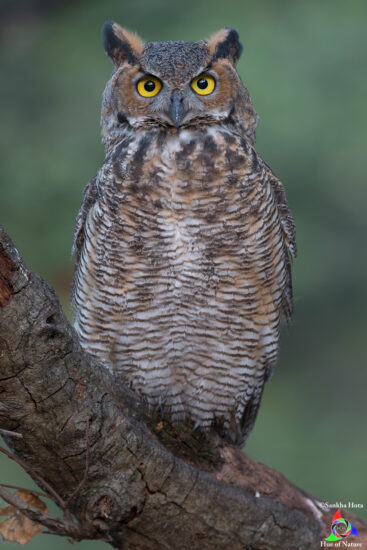
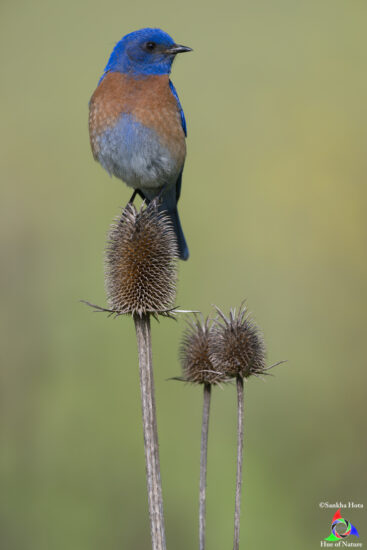
Pic 25 & 26: Great Horned Owl & Western Bluebird (f/6.3, 1/30s, 700mm, ev-1, iso 1100) & (f/6.3, 1/2000s, 700mm, EV-0.7, iso 450)
Who says portrait mode is difficult with the D500?
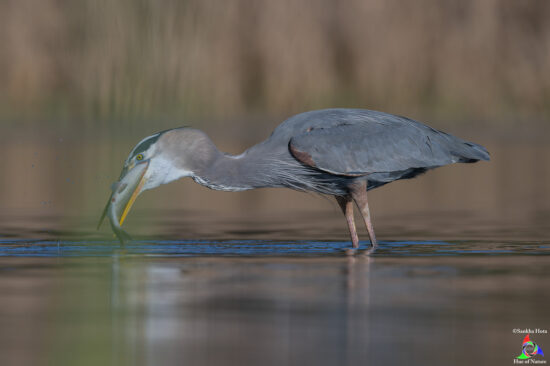
Pic 27: Great Blue Heron with a Rainbow trout (f/6.3, 1/2500s, 700mm, EV-1, iso 280)
I failed to realize that the heron had walked behind the reed because the camera didn’t complain!
In my wishlist, I wanted a camera to output good quality images at iso 6400. Well, the Z9 does deliver a very good quality image at high iso. However, if you have used DxO Pure Raw noise reduction software, it would be hard to differentiate between the final files of a D500 and a Z9, at least up to iso 2500.
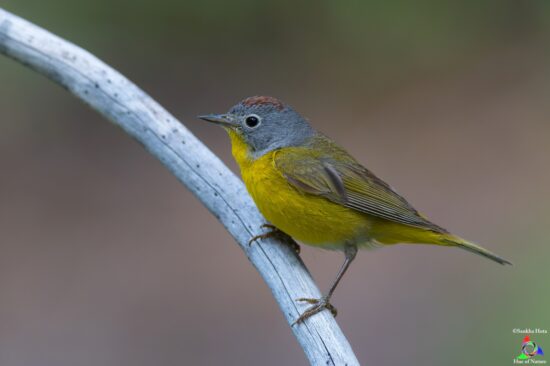
Pic 28: Nashville Warbler (f/7.1, 1/800s, 700mm, EV-1, iso 2500)
Which camera produced this iso 2500 image?
In the landscape scenario, I exclusively used the D750 and it served me exceptionally well. In most situations, a D750 is more than sufficient to capture the scene. But there are a few occasions where a Z9 may come in handy. Like the starlight view, in-camera up to 900 seconds long exposure, etc. Imagine photographing a beautiful sunrise in the morning, then golden hours wildlife photography, followed by evening wildlife photography, and ending with a beautiful sunset image; all done with one camera and two lenses. Sure, any Nikon camera can do it! However, can it do better than a Z9?
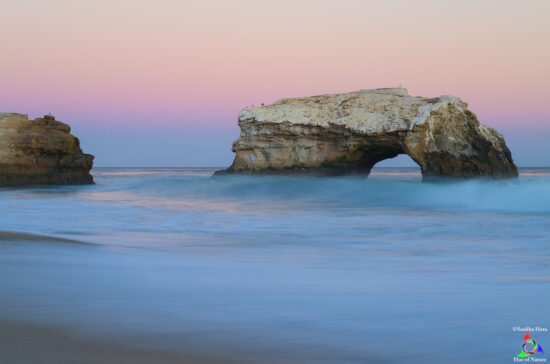
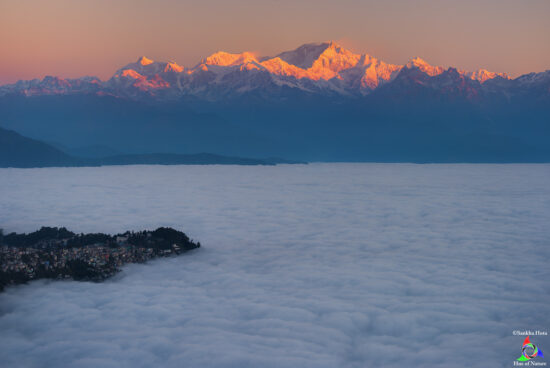
Pic 29 & 30: Sunset at Natural Bridges & Sunrise at Tiger Hill (f/14, 1.3s, 76mm, EV0) & (f/14, 1/15s, 90mm, EV-1.7)
At the end of the day, what matters most is individual satisfaction. It is fair to say that I have finally got the camera that I wished for. The last generation Nikon DSLRs were worthy cameras, but the Z9 now makes it very easy to take great images and it is also a 2-in-1 (3-in-1 with video capability) camera.
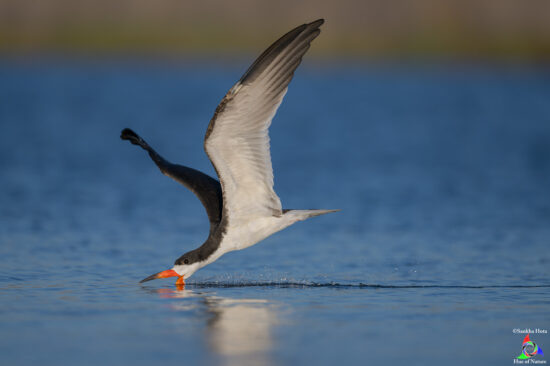
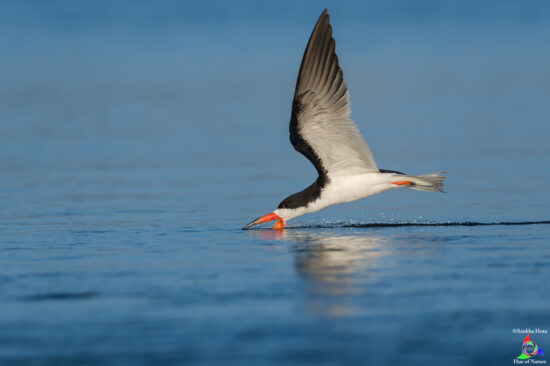
Pic 31 & 32: Black Skimmers (f/4, 1/4000s, 500mm, EV-0.3, iso 450) & (f/5, 1/2500s, 500mm, EV-0.7, iso 250)
Can you tell which camera took which image?
How much better is the Z9 compared to last-generation prosumer Nikon DSLRs (excludes D5/D6)?
Starting with the practical cons:
- Z9 is heavy and if FX lenses are used, it is heavier. So overall weight increases.
- Z9 is at least twice as costly.
- Z9 needs special memory cards for full use potential, which increases cost.
- Z9 does best with a Z lens, so more spending is involved.
- Z9 needs time to master.
- Z9 sometimes locks focus in the wrong places and the chances of missing an action have finite probability.
- Z9 makes you keep more files, so storage space will be an issue.
- Z9 does not produce the best high-iso images.
Now the practical pros:
- Z9 is lighter than two DSLR cameras.
- Z9 cost can be brought down by selling old gear.
- Z9 autofocus is very fast.
- Z9 makes old lenses like new with snappy focus.
- Z9 feels the same if a vertical grip was used with a DSLR.
- Z9 gives you the confidence to capture tough action scenes.
- Z9 produces more keepers so one can choose the best moments.
- Z9 high iso files are not that far behind.
In respect to the “wishlist”:
- The ergonomics of the D500 with a grip and Z9 is very similar.
- 20 FPS RAW is definitely better than 12-14FPS.
- Same goes for a ~46MP sensor than a 30MP.
- iso 6400 is acceptable but not there yet.
- Autofocus is hands down better than the D500 (no experience with a D5/D6)
- 4k 60FPS is there, but 4k 120FPS 2.3x cropped or 8k 60FPS is also available.
Without a doubt, I got what I wished for and maybe some more, but in a much high-end/value product. However, did I put to good use of the Z9? Is the superiority showing up in my images? Have I been able to improve upon the images I was already getting with the D500 and the D750? You be the judge!
I can only say this: with the Z9, taking difficult images with sharp details has become easier. Personally, I am able to concentrate on the subjects and surroundings more and learn the behaviors, rather than constantly worrying about where I should keep my focus point to get the best results. There were instances where a Z9 would have given me a better image or frame, like the last image in this article. Z9 was not available before, now there is no excuse. But, yes, you can do all this with a D500/D750 (examples) if the process can be repeated multiple times.
Not all images were taken with the Z9 and purposefully camera models are not mentioned.
Can you tell which images were taken with the Z9?
The clues are in the numbers/comments/questions!
Some more images:
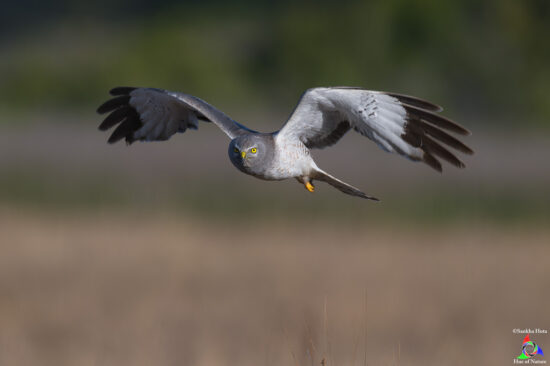
Pic 33: Gray Ghost (Northern Harrier male, f/6.3, 1/2000s, 700mm, EV-1.3, iso 280)
Any camera can take this image!
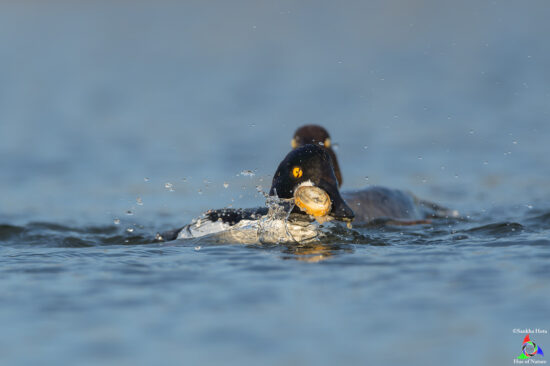
Pic 34: Golden Eye (f/6.3, 1/1000s, 700mm, EV+0.3, iso 500)
How good the Z9 will be to focus on the eye?
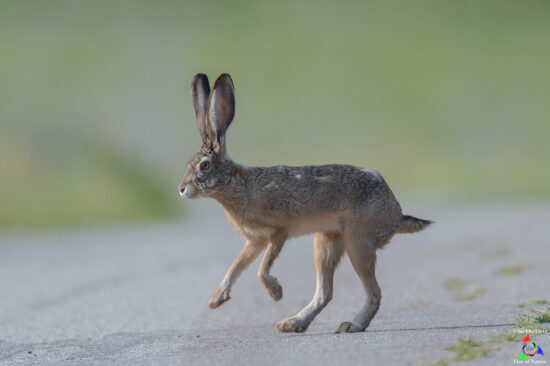
Pic 35: Jack Rabbit (f/6.3, 1/2000s, 700mm, EV-0.7, iso 500)
A very easy subject for the D500, is it?
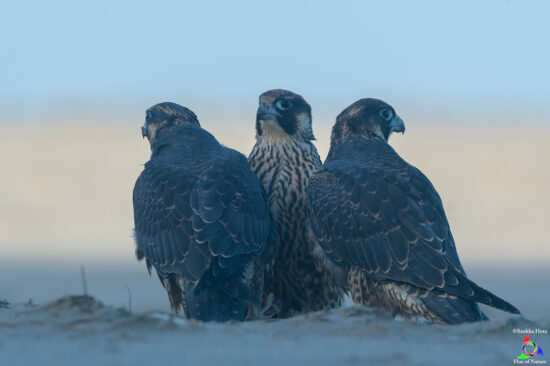
Pic 36: Peregrine Falcons (f/7.1, 1/500s, 700mm, EV 0, iso 360)
Has the Z9 eye tracking got confused?
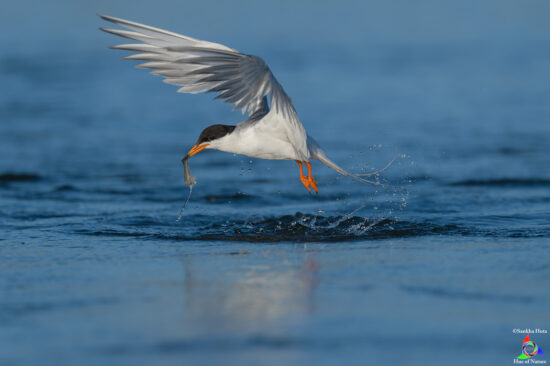
Pic 37: Forster’s Tern (f/5, 1/4000s, 500mm, EV-1, iso 180)
Can the Z9 keep up with this?
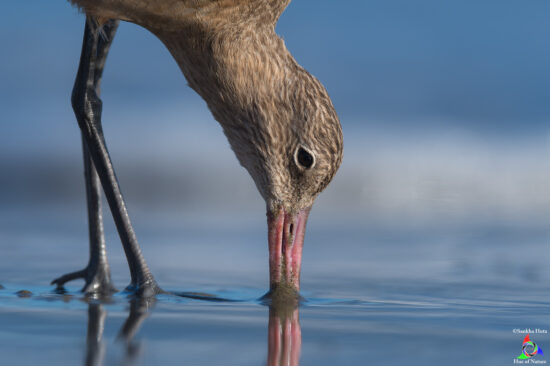
Pic 38: Willet (f/7.1, 1/2000s, 700mm, EV-1, iso 280)
What happens if the subject is at minimum focusing distance and moving, can the D500 keep up?
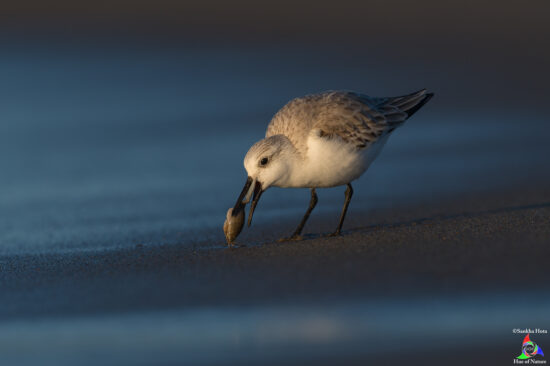
Pic 39: Sanderling (f/7.1, 1/2000s, 700mm, EV-1, iso 450)
Fun lying down when the waves are coming!
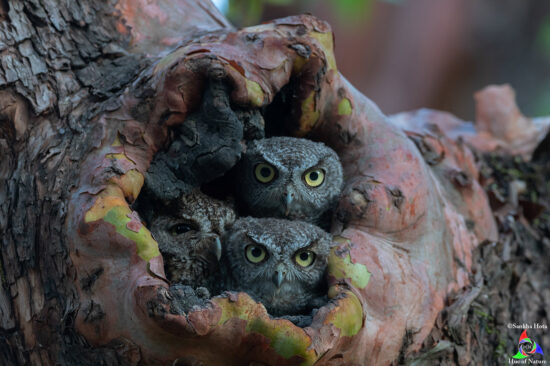
Pic 40: Western Screech Owls (f/7.1, 1/30s, 700mm, EV-0.3, iso 500)
The Z9 could have been very helpful to capture this moment better!
A split-second moment where the subject moved but not the focus point!
If you have an interesting idea for a guest post, you can contact me here.
